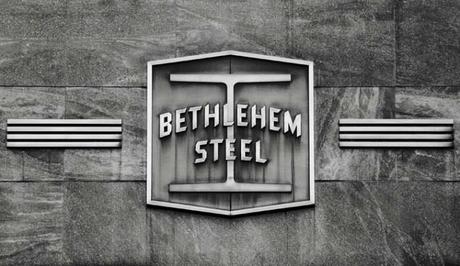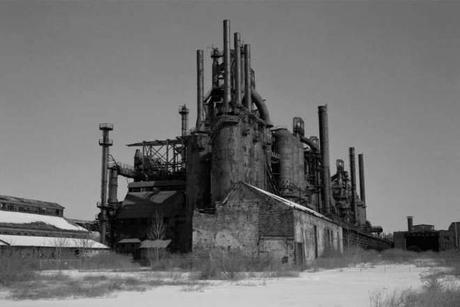
The romance of sport illustration has long disappeared. Along with it, the long era of global tobacco smoking is fitfully approaching an end. But we should remember that our rejection of such exotic, ephemeral pleasures is quite recent. Back in 1916, when a crowd of 7,500 in St. Louis turned out to see a two-match tour of the Bethlehem Steel F.C. (suitably scheduled on Christmas Eve), smoking was not something to deplore or give up. Tobacco, in fact, had a claim to the virtue and the pocket of townspeople which was as legitimate as that of St. Louis—the Bethlehem Globe conceded after the surprising 2-2 draw—to premier ranking in soccer. “That the sport was not as tarred with the ethnic brush in St Louis as it was elsewhere certainly helped to sell tickets,” writes David Wangerin, but it also created an atmosphere where a community of spectators, many of whom swearing and smoking with abandon, could feel uninhibited in expressing their delight at discovering the pleasures of a European game. For one Christmas, thanks to the thunder review of Bethlehem itself—in what may have been the ultimate joke of a wicked Jew—residents of Missouri felt that these powerful eastern Magi laid down footballing figures instead of lullabies to the child Jesus. To corn dealers and farmers of the Soulard Market, as to the confectioners and apothecaries of the French Quarter near the Mississippi, a river-god rolling among banks perennially damp, it seemed as if America turned from baseball to soccer.
Like settling ashes or a motley collection of cigarette covers, soccer has left behind many signs of this debt to pitch pleasures. What is often thought of as a history of utopian messianism projected into the future—American soccer itself—is also, and for the most part, a forgotten chapter from the past. Just how successfully football had moved and lodged into the U.S. was not properly evident until the roaring 1920s; perhaps, it all happened in the way opium transculturated into the Far East—a haunting memory, an enduring symbol of China’s victimization by the West which demanded all the standard Daoist tropes of poetry to domesticate the drug.
Sepia silhouettes of the fabled Bethlehem Steel team, whose players, once the pride of Pennsylvania, established the most prolific goalscoring records in the annals of the game, are now housed in the New York Public Library’s main collection on 42nd Street in Manhattan. On any given weekday, one could be rifling through countless rows of file folders in search of the perfect piece of scrap or layout; from its opening in 1914, thousands of people are still required to scribble a tag with a pencil, before getting access to sheaths of brittle oak-tag boards, magazines and newspaper clippings, vintage engravings, and postcards. (There are days, when I sit in the midst of these incredible resources, among tattered slivers of fragile paper, in which I wander what happens to cubic feet of books and records as they negotiate a thin line between storage and sequestration, shuffling along like the original “Star-Spangled Banner” moved to the fortress-like, air-conditioned rooms of Fort Knox during wartime, or resting a bit under vaulted ceilings like the portrait of Mary and Joseph in a Flight into Egypt canvas.) And what a bargain it is too, to loan such riches for free to anyone holding a valid library card. At the Mid-Manhattan branch nearby on 40th Street it’s still easy to find images of anything from abacus to zodiac, but the ravages of sustained use are apparent, and their eventual disintegration is inevitable, just like a cash-stripped soccer league gave up after the mammoth collapse of Wall Street in 1929.
It is here, in the library’s vast citywide collection of prints, maps, posters, dust jackets, menus, and sheet music, that one could find the cigarette card of Honus Wagner, a turn-of-the century shortstop for the Pittsburgh Pirates. Even though, as a national myth, American baseball is inevitably linked to patriotism and its promotion is invested with the power to heal, it is not clear why a specific artifact—the tiny T206 baseball card of Wagner, produced by the American Tobacco Company in 1909—should have reached the status of relic, selling at auction for more than a million dollars. After all, it is a modest black-and-white photograph with nothing obtruding or clutching the player’s stocky chest. Perhaps, its value went up because that card is a case study of irony in propaganda, since Wagner himself despised smoking and asked the tobacco company to his his image removed. But what the colorful manufacture of these cigarette cards does, interestingly enough, is to point to a period of porous boundaries between baseball and the major game that ‘football’ once was in the U.S.


In 1918, during a contest in Pennsylvania that involved, once again, the mighty Bethlehem Steel, the local Globe fondly recalled the skills of a particular footballer, Benjamin Govier, who was explicitly referred to as “the Honus Wagner of soccer.” An immigrant Chicago player born in Scotland, Govier trained in Illinois but moved to St. Louis in the 1890s, where he had since been remembered as the greatest left wing the West has ever seen. An American veteran (and a captain) he may have been, but throughout Govier’s career, it was not the virtue of the upwardly mobile but the flagship of Scottish talent that ultimately emerged. Did early worker teams rely on booters from the same country? And did soccer help reestablish ethnic solidarity among immigrants who had played the game back home? Or did it rather become a touchstone for people who did not possess a strong tradition of the game?
Judging from the records describing the activities of the Gaelic Athletic Association, which began holding annual games in Chicago as early as in 1891, the attention was strictly centered on ethnicity. The papers made no formal attempt to describe the nature of the game. Scores were blurred, movements hybrid, and the midfield sometimes featured twenty-one men per side—it was “football,” Gaelic style. There can be no doubt that, by the time the Bethlehem Steel caravan touched the art deco crenellations of St. Louis, their Christmas Eve match represented a way, through athletics and gymnastics, for “the Germans to be where they are today,” as O’Neal Ryan, chairman of the Irish National League, put it. Behind all this jolly correctness the Bethlehem team was quickly being established as the beacon of everything that was modern in the game; this included, almost certainly, the peculiar blend of coffeehouse wit and proletarian zest that made the fortune of English squads such as Chapman’s Arsenal and that is routinely epitomized as a pyramidal system. (Just who would be in charge of the deep-lying playmaker role in this fragmented, American situation is still an open question.)
Like in the fictionalized world of Isaac Babel, this footballing community was for the most part formed by a pastiche of underworld characters from the villages and shtetls of Eastern Europe. As a steel corporation, however, Bethlehem relied on the ports of Baltimore and Philadelphia, and in the first decades of the new century became increasingly dependent on ores from the Juragua mines in Cuba. In both fields, the city’s ability to move onto a firmer footing benefited from a passive policy of price leadership and on the willingness of the ‘big leagues’ in the U.S. to tolerate the loss of a portion of sales and profits to smaller companies like Bethlehem. In this respect, the soccer glory of the team from Pennsylvania is foreshadowed by the giant entrepreneurial figure of Charles M. Schwab, whose aggressive strategy turned the corporation into what was—according to a New York Times editorial of April 1915—“possibly the most efficient, profitable, and self-contained steel plant in the country.”
As flamboyant as the man himself, Schwab might not have travelled all the way to St. Louis for the Christmas event, but his support for soccer, ushering Bethlehem to a new era of sports dominance, must have been strong and unwavering. (In the stymied paper-museum of the New York Public Library I imagine that Schwab and the team executives went to meetings with the same frictions of Roosevelt and Churchill in Casablanca, when they decided, in 1943, that Sicily and not northern France would be the next Allied objective.) This was no frivolous time. Army barracks in Bolzano ended up with no gas in 1916. The bodies of Austrian soldiers were scattered by the granades, whirling in pieces through the winter fog. In the diary of Giani Stuparich, who observed similar phenomena from the trenches with the help of binoculars, one could read photographic explosions and sequences like this one: “blaze, black cones of fire, puffs of white cloud—here’s the battle.” The spectators of the St. Louis match had to deal with a similar experience, less violent and corpulent, but equal in musicality and duration. For a team that outclassed the rivals with a stream of 162 wins, 6 losses, and 16 ties between the 1913 and the 1916 seasons, the game could only have been organized and scientific from the beginning. A bunch of players rumored to be as fast as Halley’s Comet, Bethlehem was also the natural evolution of an impromptu street parade—Hungarian, Irish, Portuguese and German footballers capable of keeping fans on the edge of the seat.
On 72 Broad Street, in Bethlehem, a nickel gained entrance to Angelo Tocce’s National Moving Picture Theater, where every feature carried an intoxicating sensation (“come and be convinced,” promised a brochure from the period) for, like in the soccer park, there was no ‘flickering’ or ‘flashing’ while the picture was in motion. When Bethlehem defeated the boys from Catasauqua with a 1-0 score a picture was taken—the vivid photograph of a steamy courtyard among gossip and garbage of wartime, showing a soccer revolution that threatened to burn itself out before anything great could be achieved. There is the prototypical Jewish pawnbroker, who would gladly trade the message of Bolshevism for an International of good people; the empty-hearted platoon commander from Berlin; the Odessa thug; the raspberry-cheeked Italian, his stomach like a horn playing the opening march from Pagliacci. With or without a sneer, it all suggested that when it came to drying conjugal rags, suckling babies, and big-city footballing chic, America was a tireless mother. Which was precisely the point of even having Bethlehem coming to St. Louis for Christmas. ♦

